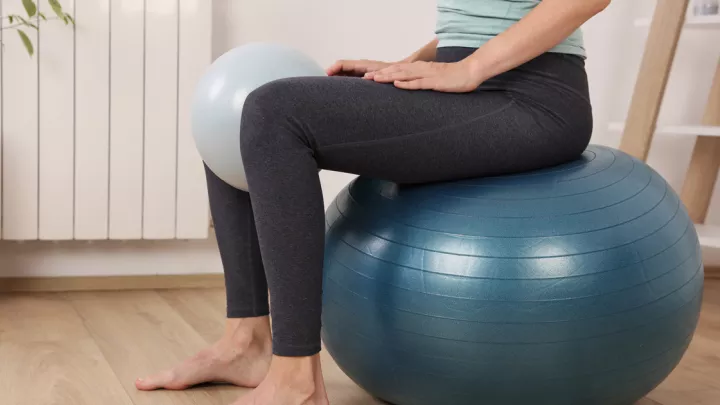Can you do too many Kegels? What to know about hypertonic pelvic floor

Your pelvic floor is an essential part of your body structure. Working as shock absorbers for your body’s core, these muscles require strength, flexibility and coordination to support organs like the bowel and bladder, uterus, vagina, rectum and prostate. You may notice bothersome symptoms when the pelvic floor isn’t functioning correctly.
While talking to a doctor about your symptoms may seem embarrassing, overdoing it on Kegels probably isn’t the answer. You don’t have to put up with pelvic floor dysfunction no matter what your age or gender – there is help and hope if you are struggling.
What is hypertonic pelvic floor?
Hypertonic pelvic floor issues can occur when the lower pelvis muscles spasm, are tight or contracting. When this happens, the pelvic floor muscles can’t fully relax, which may cause other issues controlling certain bodily functions and may cause pain. The condition can vary from person to person, be temporary or constant, and affect both women and men.
“There are different types of language to describe the pelvic floor function,” says physical therapist and women’s health specialist Shannon Flint, PT, DPT, WCS, CLT, PCES. “Words like tightness, tension or overactivity may be used, but generally, the goal for a healthy pelvic floor is to have good strength, endurance, coordination and flexibility with no pain or tenderness.”
Hypertonic pelvic floor symptoms can vary from person to person, but may include:
- Pain with any type of penetration, including pelvic exams and sexual intimacy.
- Uncomfortable insertion or removal of feminine products.
- Pain in the pelvic area with sitting activities like biking or prolonged sitting.
- Leaking urine or stool when sneezing, coughing, laughing or running.
- Frequent need to urinate, painful urination or straining to have a bowel movement.
- Pain in the testicles, groin area or perineum.
- Difficulties with sexual function, pain in the testicles, perineum or groin area.
Symptoms can occur for a variety of reasons. For example, symptoms may appear after any pelvic surgery or repair, after vaginal delivery, with chronic stress, a history of abuse or trauma, or, more rarely, chronic constipation.
If you’re struggling with pelvic floor issues, specialized rehabilitation can help.
Do Kegel exercises help? Can you do too many?
It depends on what may be going on with your pelvic floor. While Kegel exercises may help both men and women, doing too many or the wrong type may increase muscle tension and pain or worsen your symptoms. Kegels should never cause pain.
“When it comes to Kegels, choose quality versus quantity,” says Flint. “Looking online for resources might be a helpful option at the start, but if you’re finding that you’re not seeing changes or results over a month or so, don’t assume the exercises don’t work or that you just have to live with your symptoms. You may need more guidance through a conversation with a knowledgeable rehabilitation therapist specially trained in pelvic floor rehabilitation. We can develop a treatment strategy tailored specifically to you.”
Are hypertonic pelvic floor and other pelvic floor issues curable?
“Yes, most definitely,” says Flint. “There are many different tools and strategies we can use to restore normal flexibility of the muscles and improve overall pelvic floor function. The first half of the treatment course will typically focus on restoring flexibility and reducing pain through deep diaphragm breathing with exercises and positions to help open up the hips and pelvis. It may also include external and internal methods to help restore flexibility and eliminate pain or tension symptoms. Once the flexibility is restored and muscles are pain-free, we can work to strengthen the pelvic floor muscles.”
Another strategy is using biofeedback, like an EKG, to monitor muscle activity and measure relaxation. Biofeedback can be used during treatment to help improve the relaxation, coordination, and strengthening of the muscles through real-time visual feedback. Rehabilitation professionals can also teach patients different exercises to do at home to help give them strategies to manage and reduce their symptoms.
“If you’re hesitant about seeking help, know that you’re not alone,” adds Flint. “Pelvic floor symptoms are very common, and there are many things we can do to help. Whether you are comfortable having an initial conversation with your primary care provider, gynecologist or urologist, ask for a referral for physical or occupational therapy. We understand that it feels personal. Rest assured, we will always meet you where you’re at and move at a pace that helps you feel comfortable.”
Learn more about pelvic health rehabilitation and what to expect.







